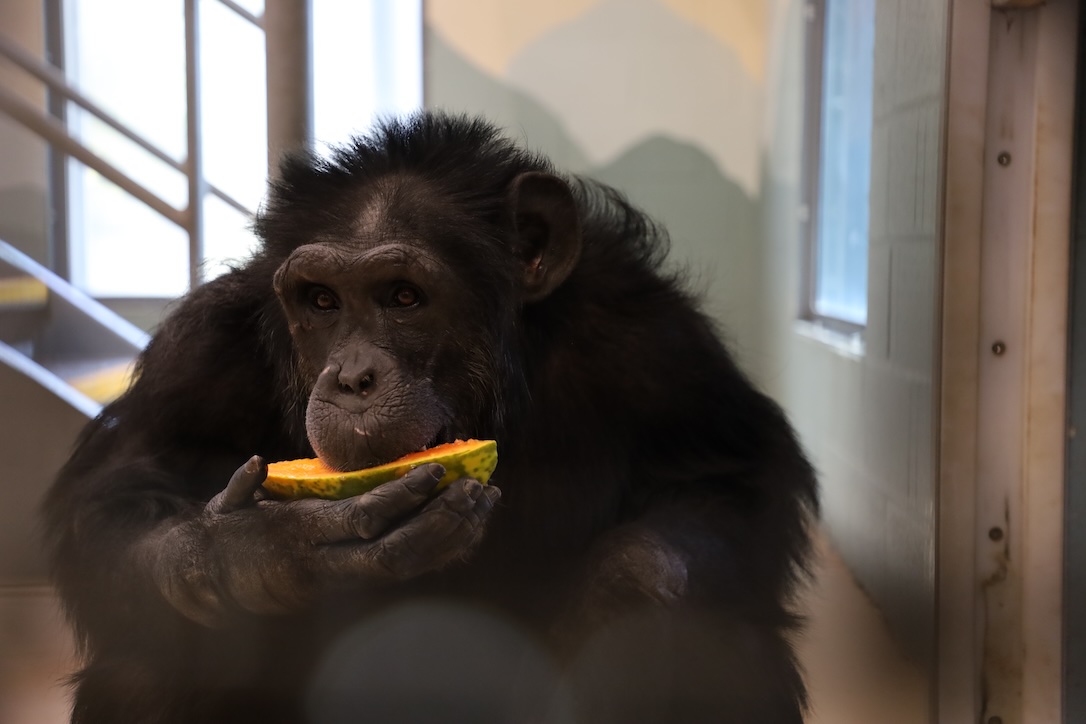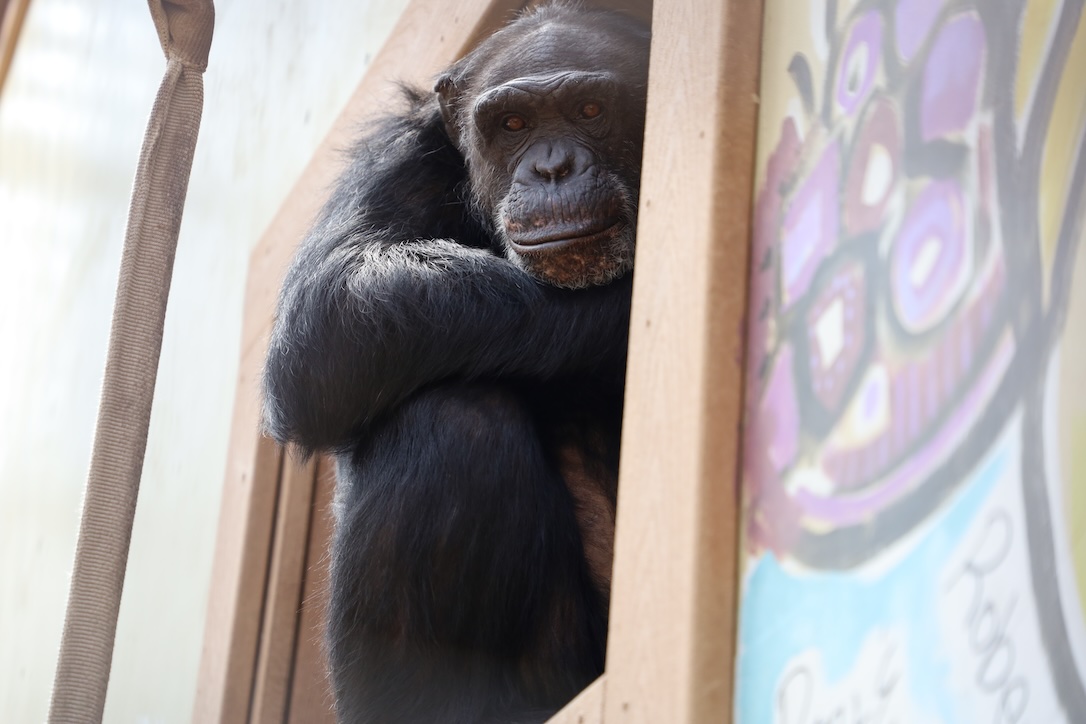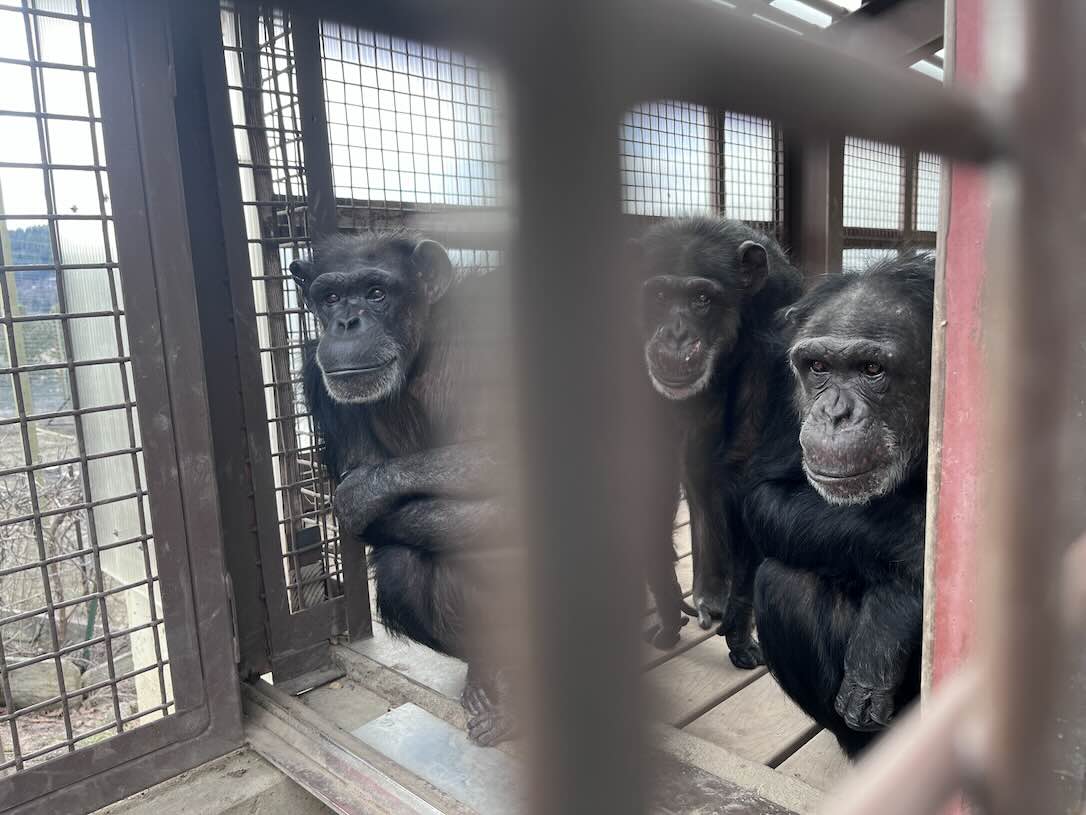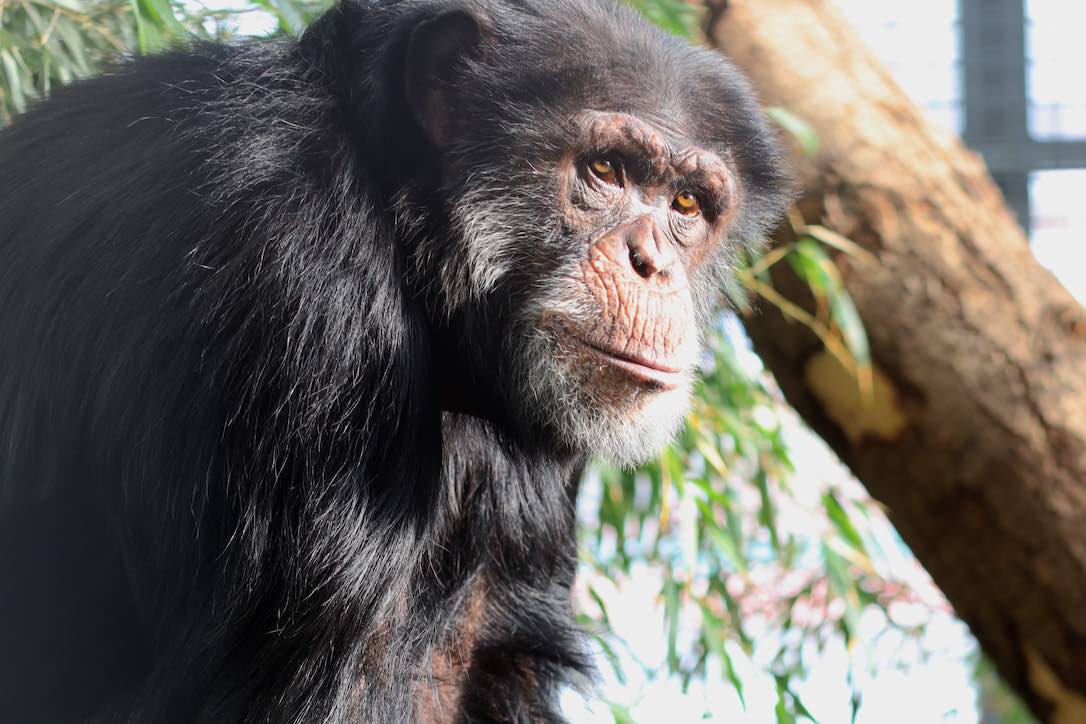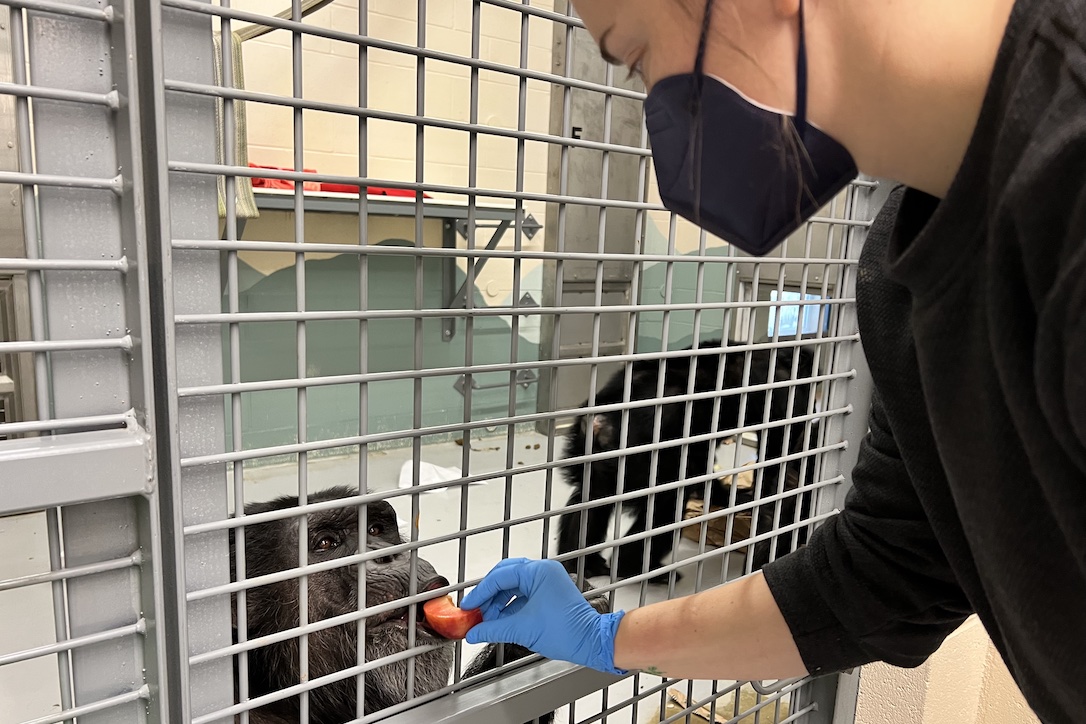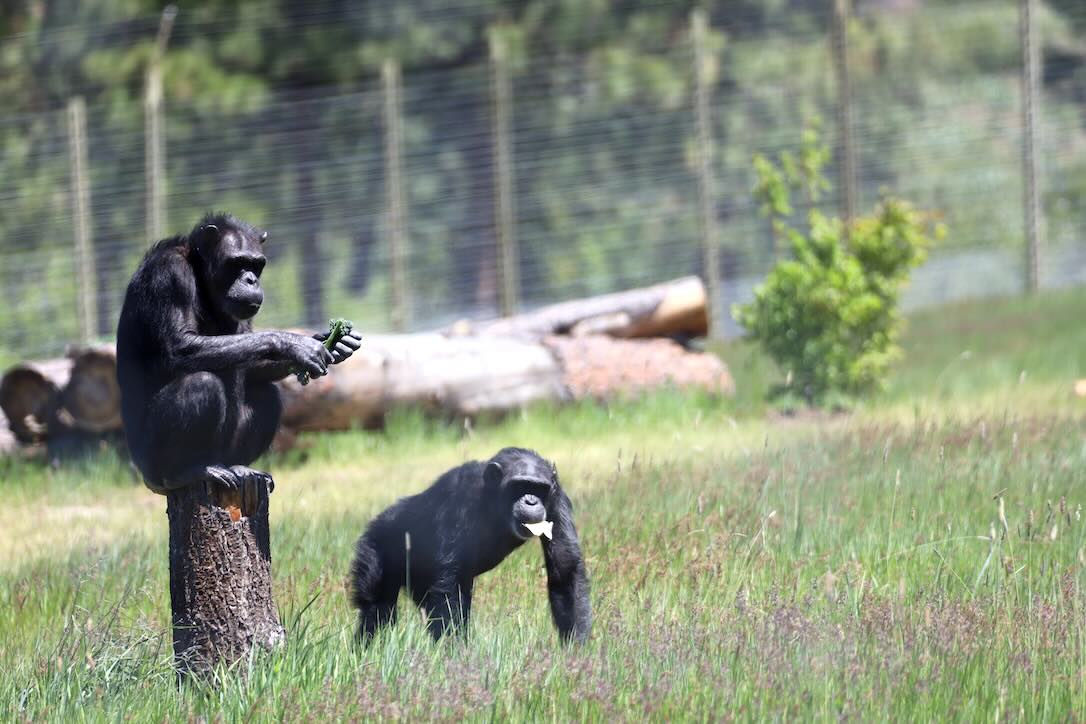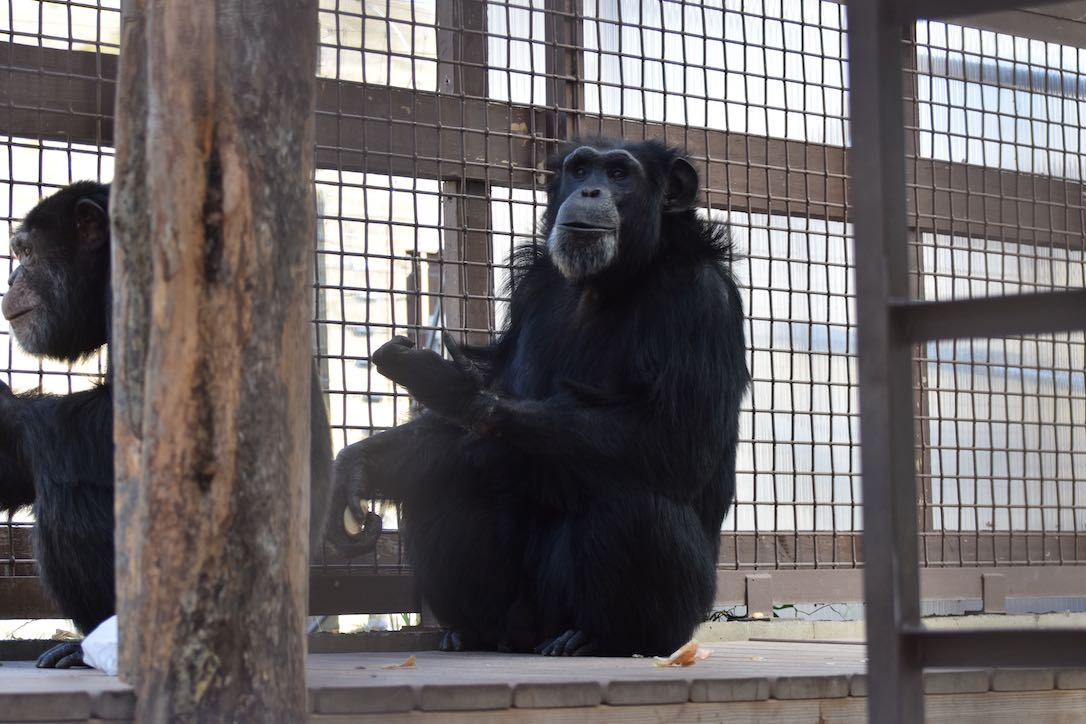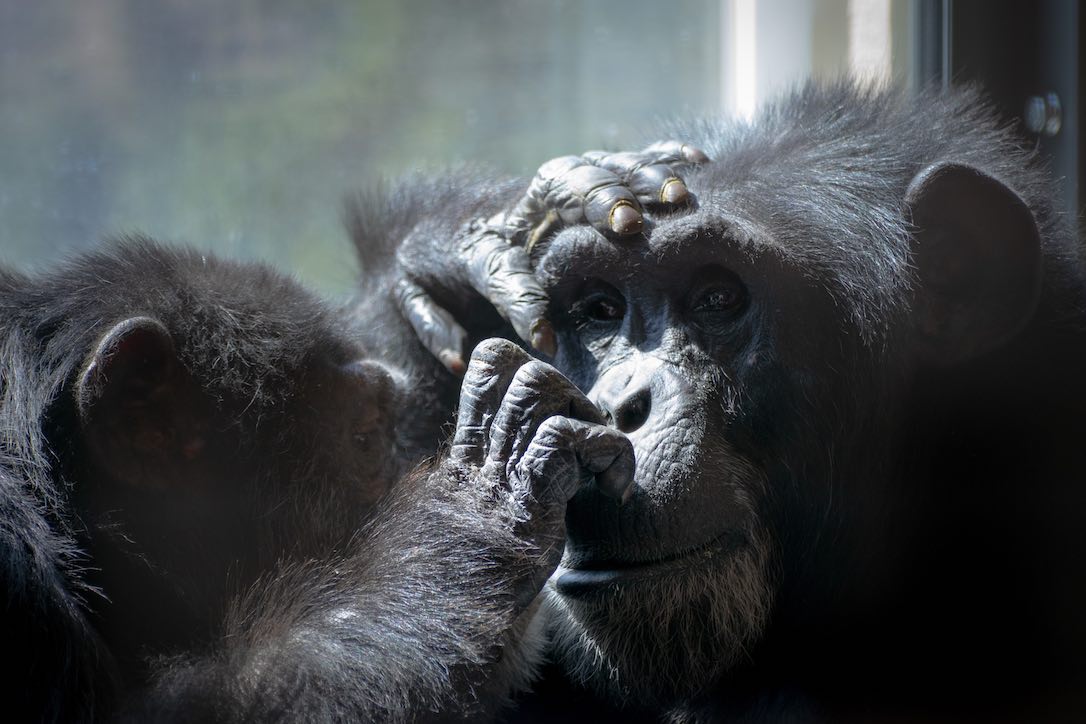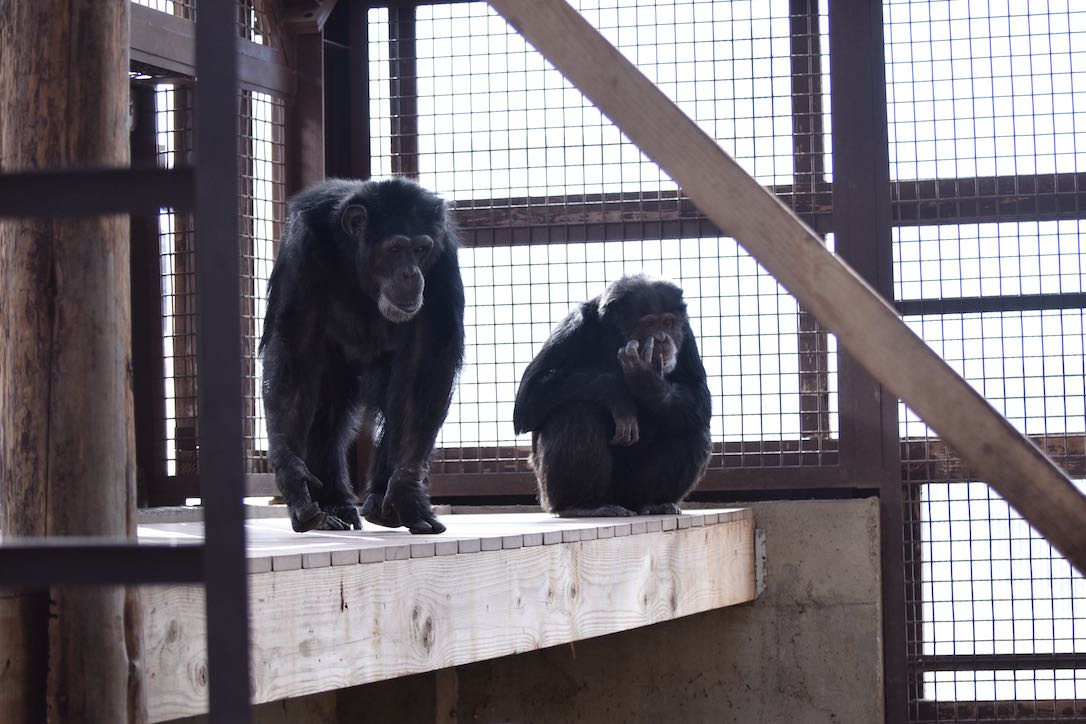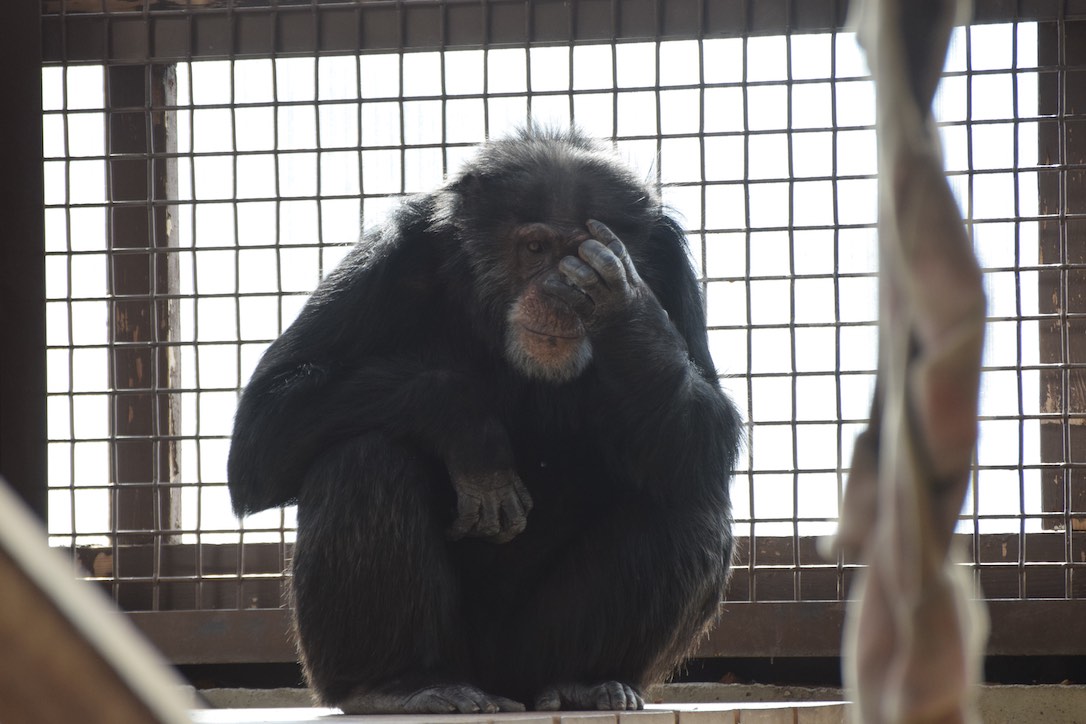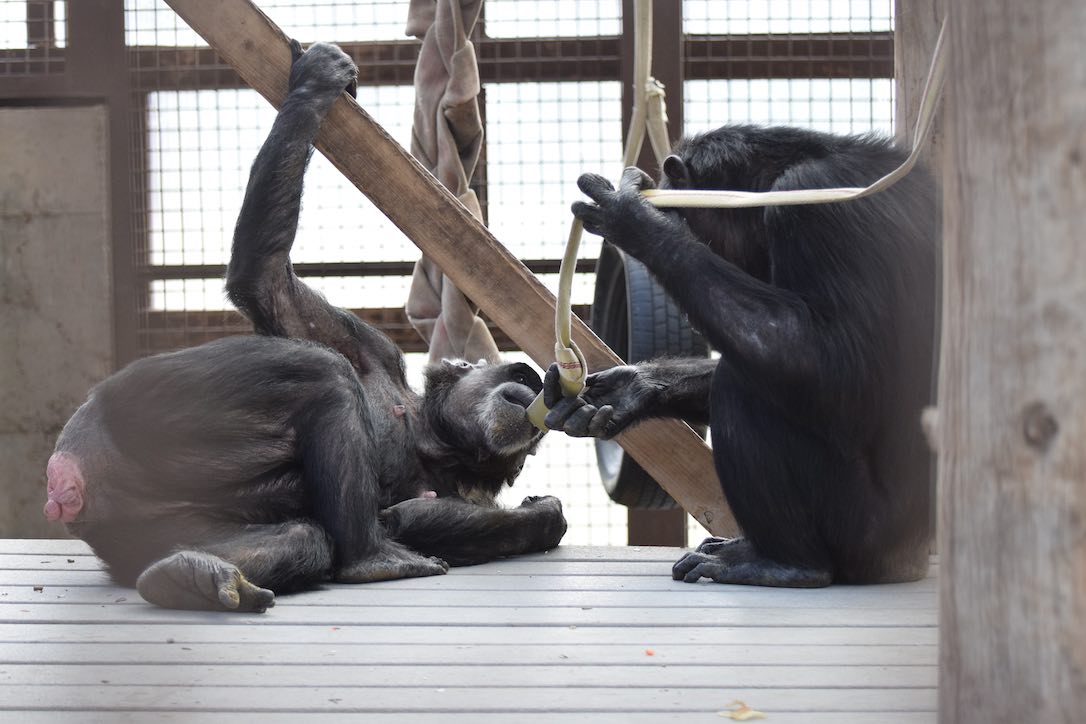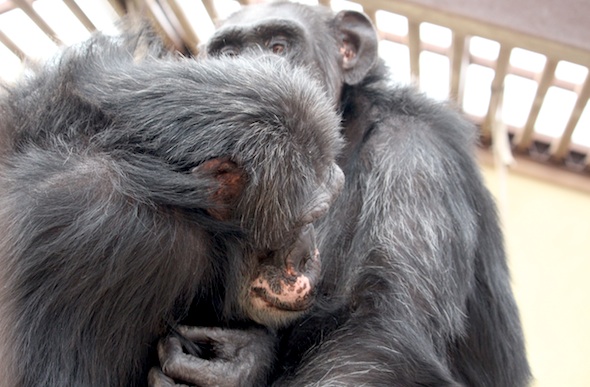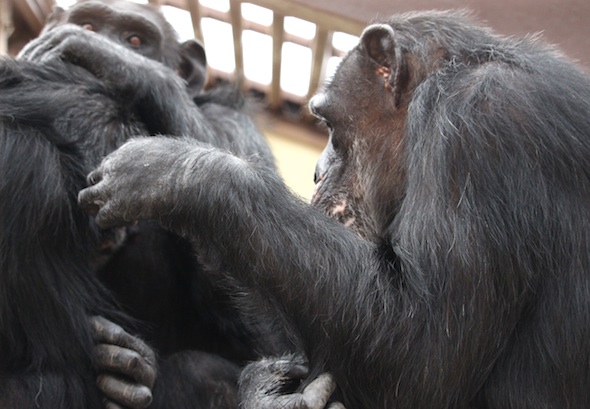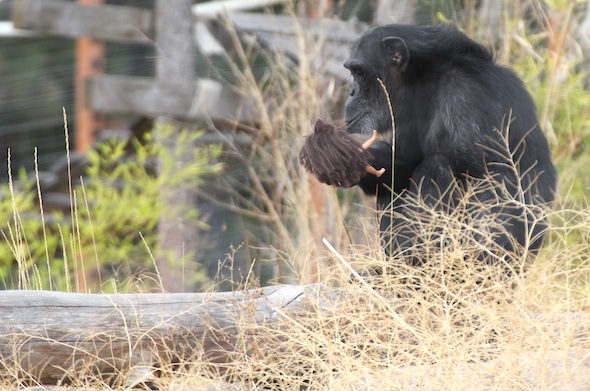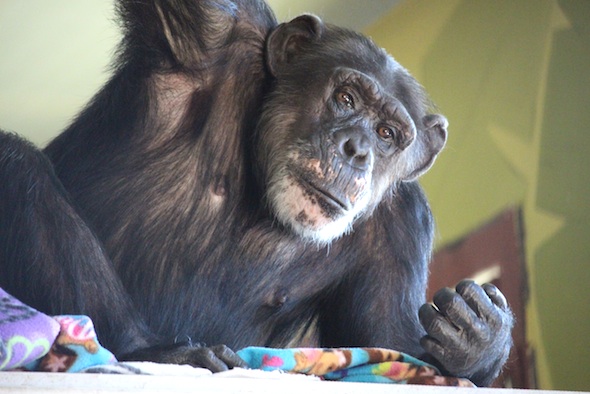Today I got two decent photos of two chimps in two separate groups. Willy B and Jamie. My mind started to ponder the question, what do these two have in common? As it turns out, one pretty major thing stands out.
They’re both EXTREMELY food-motivated. They rule meal times with an iron fist, often trying to dominate their group mates and intimidate their way into getting extra food. They’re usually first to enrichment food puzzles and have a way of making sure they get access to them as much as possible. For example, we’ve seen Willy B collect all the chopstick “tools” used for getting food out of certain puzzles. This is his crafty way of ensuring he has first dibs on the treats. Jamie on the other hand, has a domineering presence about her. Annie and Foxie (low ladies on the totem pole) know to steer clear of her during meals.
Food dominance is widespread within chimpanzee groups and these dominance trends are seen throughout both groups at the sanctuary, not just with Willy B and Jamie. A common hierarchy we see is between Missy and Annie. Even though Missy and Annie are BFFs, some tension still comes between them during mealtimes, with Missy wanting her food served first and Annie seeming uncomfortable if she is served close to Missy. On the other side of the coin, Negra knows she can always get Missy to give up some of her food if she whimpers dramatically and holds out her hand. Missy knows it’s time to pay the queen.
Annie, Missy and Jamie:
Usually male chimps are more dominant to female chimps, but no one told Mave this rule. She has been known to chase Gordo around, demanding he give up some of his food. Meanwhile, Willy B isn’t afraid to assert his dominance over Mave.
Mave:
While food hierarchy among chimpanzees is completely normal, it’s also up to us caregivers to help mitigate some of the aggression and to make sure everyone gets to eat. We give as many options as we can for locations for the chimps to eat and try positive reinforcement stationing techniques to encourage the more dominant chimpanzees to stay in their designated places during mealtime. Meals are often served directly to each chimp so we can monitor and make sure they are able to generally eat their entire available portions.
For forages, we cut up the food in many pieces and spread it as far as possible around their enclosures. It’s important to find a balance and not do too many forages because the hierarchy is always present and affects the quantity and types of food each chimpanzee has access to.
Food is one of the most enriching aspects of the chimpanzees’ day to day lives. It makes it that much more important that we are careful with its delivery.
